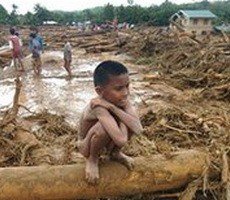 File photo
File photo
A report by the Ghana Living Standards Survey (GLSS6) carried nationwide in 18,000 households in 1,200 enumeration areas from October 2012 to October 2013, revealed that a quarter of Ghanaians are poor.
The data further reveals that about 26 percent of children from five years to 17 years engage in child labour, whilst another 25 per cent are found in hazardous work.
Enumerating the key findings of the survey, Dr Osei Boeh-Ocansey, Ghana Statistical Service’ Board Chairman, said for education, the school attendance rate from six-11 years were very high- 93.3 percent for boys and 92.6 percent for girls.
In an address that launched the Global End Poverty campaign in Ghana, Dr Jim Yong Kim, President of the World Bank Group, said the World Bank Group had set up a goal to end extreme poverty by 2030 and to boost shared prosperity for the bottom 40 percent of the populations in developing countries.
Therefore, it was with contentment and relief when Ghana halved extreme hunger and poverty target of the Millennium Development Goal from 52.6 per cent to 21.4 per cent.
Ghana was the first country in sub-Sahara Africa to achieve the feat in 2015. Economic and socio-demographic change that is driven by structural transformation, the emergence of a more skilled labour force and geographical mobility among others helped to reduce poverty in Ghana, the report said.
Ghana Poverty and Inequality Report in March 2016, revealed that growing inequality in consumption, regional disparities and a deteriorating macroeconomic environment pose challenges in eradicating poverty.
“We found that children are significantly more likely to live in poverty than adults.
Given the long-term and intergenerational nature of child poverty, this suggests that child poverty needs to become a specific focus of Government policy, taking an integrated approach to ensure that child wellbeing is tackled, particularly to address the 1.2 million children who are extremely poor,” the report said.
A survey by the Ghana News Agency in the principal streets of Accra exposes the increased number of children from five to 15 years who ply the streets begging for alms during school hours.
On the independence avenue road mainly around the Afua Sutherland Children’s Park to Danquah Circle interchange towards Shiashie and Okponglo, children are seen cleaning the windscreens of vehicles, carrying out menial jobs or begging to survive.
Most of these children end up being victims, especially the girls of sexual defilements.
It is worth mentioning that successive governments have over the years drawn policies to achieving overall poverty eradication and building basic educational facilities and materials as well as the National School Feeding Programme, all in efforts to increase the number of children in basic schools.
However, focus on poverty eradicating in the country has, in previous years been shifted to the three Northern Regions with the Savannah Accelerated Development Authority(SADA) policy being initiated to address the poverty challenges in the north.
The current government have proposed to restructure SADA, into a more focused Northern Development Authority as originally envisaged and make it a flagship programme for the economic transformation of the Northern, Upper East and Upper West Regions.
As much as the initiatives must be lauded in focusing poverty eradication in rural and deprived communities, a careful attention ought to be given the declining poverty reduction in the southern part of the country, especially among school-aged children.
More policies should be initiated to get the children off the principal streets of Accra to where they ought to be- in the classroom and various orphanages.
Laws should be enacted to critically and morally deal with parents and guardians who force these children to solicit for alms on the streets. We cannot afford to watch the future leaders of this country to turn into “professional” beggars.
Children in the southern part of the country need attention and they need solutions to their poverty condition too.